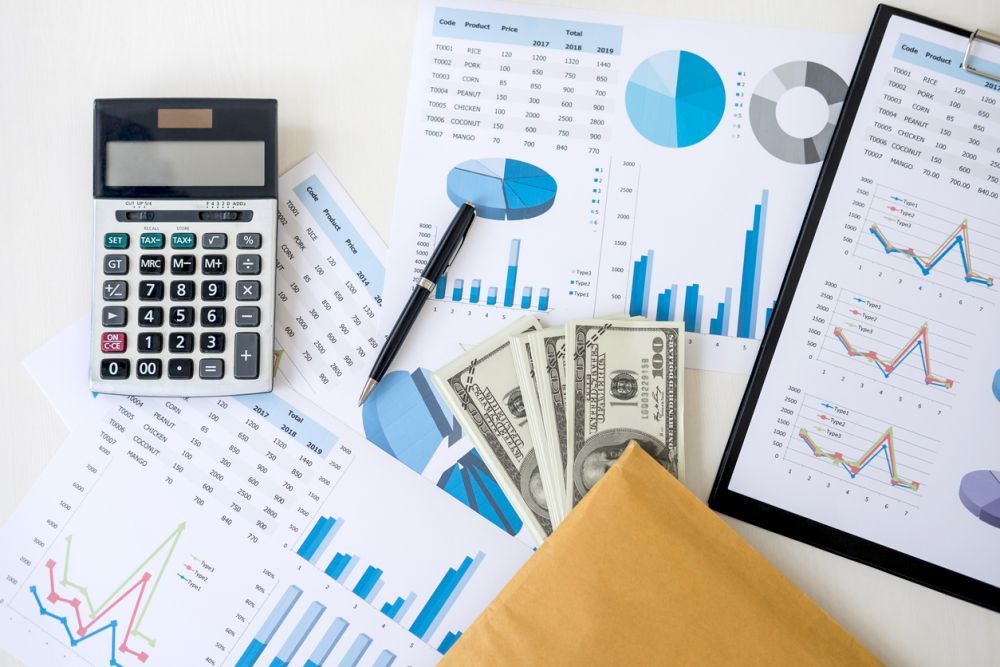The purchase order is the official request and confirmation of a customer’s purchase.
It details the specifics of an order such as the date of the order, description of the desired goods, their quantity, payment terms, and so on.
One of the most essential elements of a purchase order is the PO number.
The PO number is a unique identifier that helps both the buyer and seller effectively store and keep track of their purchase orders.
In this guide, you’ll learn more about the PO number, its importance, and how to set up a PO numbering system for your small business accounting.
To further streamline procurement and automate PO management, platforms like ERP.AI use AI to eliminate manual entry, ensure accuracy, and improve end-to-end purchase order workflows.
What Is a Purchase Order?
A purchase order (PO) is the document buyers send to vendors to communicate what goods and services they want to purchase. Upon approval by the vendor, the purchase order then becomes a legally binding document.
A properly documented PO includes elements such as:
- Date of the order
- The description of the goods or services
- Quantity of the goods or services
- Payment terms
- Buyer and seller contact information
- Unique PO number
What Is a PO Number?
The PO number (or order number) is a unique reference code assigned by the buyer to a purchase order to help track the order. The code can be generated manually by the company’s management or automatically through accounting software.
PO numbers will also be referenced throughout the entire transaction, on client phone calls, shipping forms, and sometimes on the corresponding sales invoice to make sure that the invoice and order match.
Do you want to know the main differences between an invoice and a purchase order? Then check out our purchase order vs invoice guide.
Where to Include a PO Number on an Invoice
The specific location of the PO number on an invoice depends on the type of template you’re using. Usually, though, it’s placed at the top of an invoice, below or next to the invoice number.
Here’s an example of a Word invoice template to illustrate:
If you want to learn how to create an invoice from scratch, head over to our step-by-step guide on how to make an invoice that gets you paid faster.
Why Are PO Numbers Important?
It doesn’t matter if you’re on the side of the buyer or the seller - the purchase order is an important business document that both parties have to keep track of and comply with.
Assigning a unique PO number to each purchase order helps by making order tracking faster and more accurate. When a customer has an issue related to a several months old purchase order, the corresponding order and invoice can be easily found by searching for the PO number.
The same advantage applies if your business is the one making the order and PO number. With a PO numbering system, the code is easy to generate, and purchases just as easy to locate and double-check when necessary.
Using a PO number also prevents duplicate payments, incorrect filling, and other accounting errors that may occur along the way.
Ensuring professional, legitimate service is crucial to the overall financial health of your business. If you deliver the wrong order or accidently bill a customer twice, that can result in huge losses to the business’ reputation, time, and money.
How to Create a PO Numbering System
There are two main approaches you can choose from when creating a PO numbering system: manual and automatic.
Manual PO Number System
If you’re managing a small business that deals with very few purchase orders, you may have the flexibility of manually generating your own PO number system.
The code can be a mix of letters, numbers, dashes, arranged in any way that best makes sense to you as a business owner.
For example, you can move up sequentially for every new purchase order issued. Start with 1, 2, 3, or even 00001, 00002, and so on. You could even add in “PO” in front of the number to make the code more specific.
If you’re looking for a longer PO number, on the other hand, consider generating the system based on the date when the order gets created.
For instance, the PO number for a purchase order sent out on March 26th of 2021 would look like: PO 26032021-000001.
Whichever method you decide to progress with, remember to always separately write down the vendor’s name, main order details, and date of validity for future reference.
Repeat this same practice when receiving orders too.
Write down the customer’s name, order number, the amount owed, and other important details of the purchase order on a spreadsheet, so that you’re always in control of your work and finances.
Automatic PO Number Generator
The more purchases you make, the harder it is to keep track of your purchase orders and business expenses. There comes a point where manually assigning a code to every order becomes tedious, time-consuming, and impractical.
The good news is that nowadays there are many affordable, cloud accounting systems with a built-in PO number feature that creates and assigns PO numbers automatically.
The best all-in-one accounting software for small businesses today is Deskera.
We at Deskera have a dedicated dashboard that not only generates PO numbers for you but also automates your entire purchase order process, within seconds.
In our Buy module, you can easily place a new order, convert it to a bill, and track your receipts, anytime, anywhere. See what you owe your supplier at a glance: paid and outstanding amount, what invoice payments are due soon, what has become past due, and so much more.
And you no longer need to call someone or head to your office to create a purchase order, either.
Deskera allows you to make POs on the go - directly from your mobile phone.
Save time and effort by downloading the Deskera mobile app, in just a few clicks. Sign up for our free trial, now!
How AI Can Streamline Procurement for Modern Businesses
AI is transforming procurement by automating PO creation, matching invoices with purchase orders, flagging discrepancies, and tracking supplier performance.
AI helps forecast demand, recommend optimal suppliers, and ensure compliance with internal procurement policies. Use AI to get a smarter, leaner procurement process that saves time, lowers costs, and supports strategic sourcing.
PO Number FAQ
#1. Is a PO Number the Same as an Invoice Number?
No, a PO number and an invoice number are not the same.
Both numbers are unique codes that serve as document identifiers, but a PO number is assigned to purchase orders, whereas the invoice number to invoices.
An invoice can include both the PO number and the invoice ID, as a way of making sure that the invoice corresponds to the buyer’s order. The invoice reference number, on the other hand, is only an invoice element.
#2. Is a PO Legally Binding?
The buyer sends their purchase order to the seller, who then has the choice of whether or not to accept it.
Once that purchase order is accepted and signed by both the buyer and the seller, it becomes a legally binding document.
Key Takeaways
And that’s a wrap!
Before leaving, let’s go over the main points we’ve covered today:
- The PO number is a unique reference number assigned to every purchase order.
- It’s generated by the buyer and referenced throughout the entire transaction by both seller and buyer.
- Sometimes, sellers even attach the PO number to their sales invoice to make sure they’ve billed the right client for the correct order.
- PO numbers help order tracking get done fast and accurately, as well as prevent possible duplicate payments or incorrect fillings.
- You can either generate a PO number system manually or automatically through accounting software.
- The manual approach is suitable for businesses with very few transactions. For bigger businesses, however, it’s best to use cloud accounting software like Deskera instead.
Related Articles














